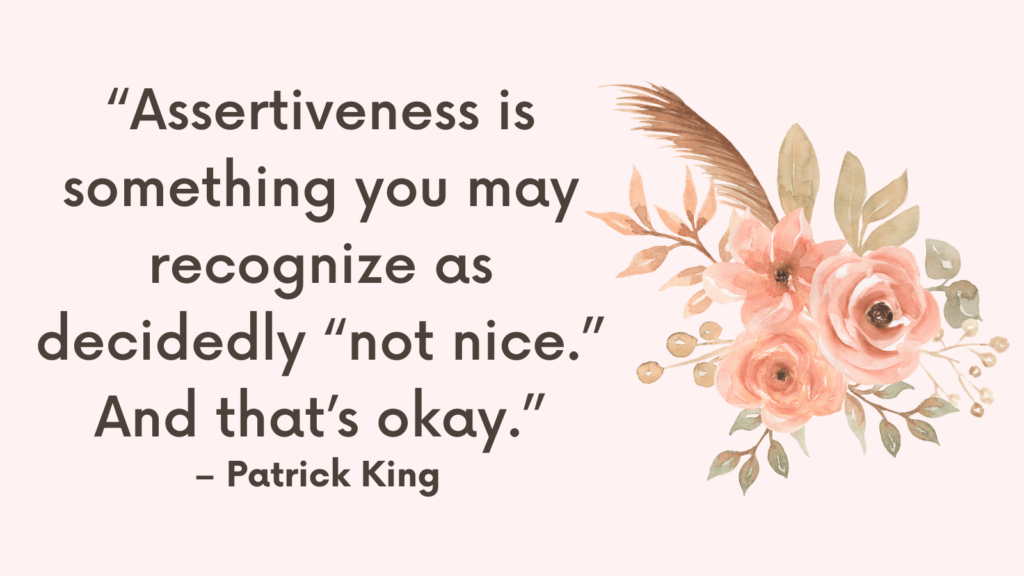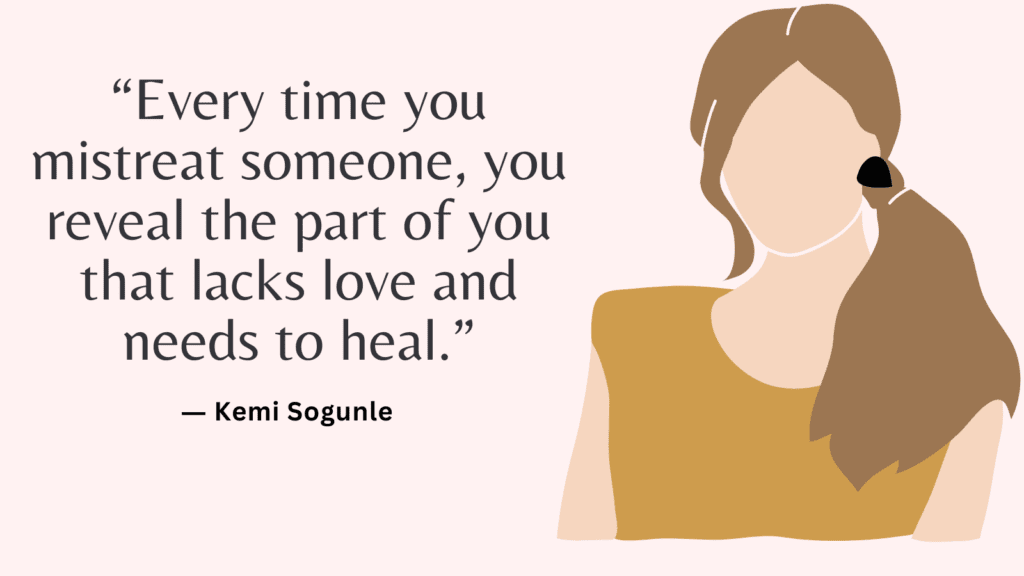This post contains a list of intellectual boundaries examples.
What Are Intellectual Boundaries?
Intellectual boundaries refer to the limits and guidelines individuals establish regarding the sharing of their thoughts, beliefs, and intellectual property with others.
These boundaries are essential for safeguarding cognitive autonomy, respecting personal intellectual contributions, and maintaining privacy within personal and professional interactions.
Examples of Intellectual Boundaries
Here are 30 examples of intellectual boundaries across various contexts:
1. Work Environment:
– An employee setting a boundary around the use of their innovative ideas without proper recognition or compensation.
– Establishing guidelines for sharing confidential work-related information with colleagues or supervisors.
2. Academic Settings:
– A student asserting their right to receive credit for their original research contributions in academic collaborations.
– Professors and researchers specifying conditions under which their scholarly work can be referenced or utilized by others.
Related: +100 Examples of Boundary Violations & How to Deal With It
3. Social Media and Online Platforms:
– Content creators and influencers communicating their preferences for how their digital content can be shared and credited.
– Setting privacy settings and boundaries around the types of personal information shared on social media platforms.
4. Interpersonal Relationships:
– Communicating a preference for not engaging in debates about personal beliefs or values with friends or family members.
– Clarifying the topics or aspects of personal life that are off-limits for discussion within relationships.
5. Therapeutic Contexts:
– Clients expressing their comfort levels in sharing personal experiences or thoughts during therapy sessions.
– Psychologists maintaining confidentiality and respecting clients’ privacy regarding the content of their therapeutic discussions.
6. Family Dynamics:
– Children expressing their boundaries around privacy and personal space within the family environment.
– Family members establishing guidelines for discussing personal successes, challenges, and aspirations within the family unit.
Related: Top 5 Tips On How To Be Assertive Without Being Rude
7. Community Engagement:
– Advocates and community members setting boundaries around the types of conversations they are willing to engage in within community gatherings.
– Respectfully declining to participate in discussions or events that do not align with personal values or beliefs.
8. Creative Collaborations:
– Artists and creators clearly outlining their preferences for how their creative work is attributed and shared within collaborative projects.
– Setting boundaries around the use of one’s creative ideas and concepts in the works of others without explicit permission or acknowledgment.
9. Intellectual Property:
– Authors and inventors establishing boundaries around the use of their written work or inventions without proper authorization or compensation.
– Setting clear copyright and usage guidelines for intellectual property, such as written content, artwork, and inventions.
Related: What Do Boundaries Sound Like? + 35 Boundaries Examples
10. Debates and Discussions:
– Asserting a boundary around respectful communication and constructive dialogue in intellectual debates and discussions.
– Declining to engage in debates or discussions that veer into personal attacks or derogatory remarks.
11. Information Sharing:
– Setting boundaries around the disclosure of personal or confidential information in professional or social settings.
– Clarifying the types of information that one is comfortable sharing in various contexts, such as personal achievements or challenges.
12. Public Speaking Engagements:
– Speakers and presenters specifying their comfort levels regarding audience interaction and questions during public speaking events.
– Establishing boundaries around the types of topics or questions that are appropriate for discussion during public presentations.
13. Media and Press Interactions:
– Public figures and individuals in the public eye setting boundaries around the types of personal questions they are willing to address in media interviews.
– Clarifying guidelines for the use of quotes, interviews, or personal stories in journalistic publications or media coverage.
Related: Boundaries vs Ultimatum
14. Cultural and Religious Beliefs:
– Communicating boundaries around discussions related to personal cultural or religious beliefs within diverse social settings.
– Respectfully declining to engage in conversations that may infringe upon or invalidate one’s cultural or religious values.
15. Group Projects and Collaborations:
– Students and professionals setting boundaries around the division of labor and responsibilities in group projects.
– Establishing guidelines for respectful communication and constructive feedback within collaborative work environments.
16. Mental Health Advocacy:
– Advocates and individuals with lived experience communicating boundaries around the sharing of personal mental health journeys and experiences.
– Setting guidelines for discussions and interactions within mental health advocacy spaces to ensure respectful dialogue and support.
Related: Healthy Boundaries Quiz (+Free PDF Worksheets)
17. Political Engagement:
– Communicating boundaries around political discussions and engagement in social or professional settings.
– Declining to participate in conversations or activities that may compromise personal political beliefs or values.
18. Educational Settings:
– Educators and students establishing boundaries around respectful communication and constructive feedback in academic environments.
– Creating guidelines for the use and attribution of educational materials within classroom settings.
19. Legal and Contractual Agreements:
– Setting boundaries around the use of personal or intellectual property within legal and contractual agreements.
– Clearly outlining terms and conditions for the licensing or usage of one’s intellectual creations or innovations.
Related: Top 19 Journal Prompts For Boundaries
20. Critique and Feedback:
– Artists, writers, and creators communicating boundaries around receiving constructive critique and feedback on their work.
– Establishing guidelines for providing respectful and thoughtful feedback within creative or professional settings.
21. Scientific Research and Collaboration:
– Researchers setting boundaries around the use of their scientific findings and data in collaborative research projects.
– Clarifying guidelines for co-authorship, attribution, and intellectual property rights in scientific collaborations.
22. Personal Boundaries in Therapy:
– Clients expressing their comfort levels with specific therapeutic techniques or topics during counseling sessions.
– Setting boundaries around physical touch, personal space, or emotional discussions within the therapeutic relationship.
23. Counseling and Support Hotlines:
– Volunteers and professionals establishing boundaries around the types of conversations they are equipped to handle within support hotlines or crisis intervention services.
– Communicating guidelines for respectful and supportive interactions with individuals seeking assistance.
24. Educational Advocacy and Support:
– Advocates and educators setting boundaries around the sharing of personal experiences and challenges within educational advocacy spaces.
– Establishing guidelines for creating a supportive and understanding environment for individuals with diverse learning needs and experiences.
Related: Boundaries Circle Worksheet (PDF Download)
25. Professional Networking:
– Setting boundaries around the sharing of personal contact information and professional resources within networking events and platforms.
– Clarifying guidelines for respectful communication and engagement with professional contacts in networking environments.
26. Social Gatherings and Events:
– Communicating boundaries around the types of conversations and interactions one is comfortable participating in at social gatherings and events.
– Respectfully declining to engage in activities or discussions that may compromise personal comfort or values at social functions.
27. Intellectual Privacy:
– Clarifying boundaries around the privacy of personal thoughts, reflections, and intellectual ponderings within personal and professional contexts.
– Communicating guidelines for maintaining intellectual privacy and personal contemplation without feeling pressured to share one’s innermost thoughts.
28. Online Communities and Forums:
– Setting boundaries around respectful communication and engagement within online communities and forums.
– Communicating guidelines for creating inclusive and supportive digital spaces while respecting individual intellectual autonomy.
29. Partnership and Collaboration Agreements:
– Entrepreneurs and professionals setting boundaries around the use of their intellectual property and business ideas within partnership agreements.
– Establishing guidelines for mutually respectful collaboration and protection of intellectual assets within business partnerships.
30. Life Coaching and Self-Development:
– Clients expressing their boundaries around certain personal growth topics or exercises within life coaching sessions.
– Coaches and mentors establishing guidelines for creating a supportive and respectful environment for individuals pursuing self-development and personal growth.
Related: Top 35 Boundaries Affirmations To Help You Become More Assertive
Why Set Intellectual Boundaries?
1. Autonomy and Self-Expression
Setting intellectual boundaries allows individuals to assert their autonomy and control over the sharing of their thoughts, beliefs, and creative expressions.
This promotes a sense of self-determination and empowerment, contributing to psychological well-being.
2. Respect for Personal Contributions
By delineating intellectual boundaries, individuals assert the value of their unique ideas, creations, and intellectual property.
This fosters a sense of respect for one’s own contributions and reinforces the importance of recognition and attribution.
3. Emotional and Mental Health
Respecting intellectual boundaries can contribute to reduced stress and anxiety by preventing individuals from feeling overwhelmed or coerced into sharing their personal thoughts and experiences.
This can lead to a greater sense of emotional well-being and comfort in interpersonal interactions.
4. Healthy Interpersonal Relationships
Clearly defined intellectual boundaries promote healthy communication and mutual respect within relationships.
Individuals are better able to navigate conversations, collaborations, and debates without feeling their boundaries are being violated, leading to more positive and supportive relationships.
Related: Boundary vs Control
How to Set Intellectual Boundaries?
Establishing and maintaining these boundaries requires clear communication, self-awareness, and a proactive approach to navigating interpersonal interactions. Here are several strategies to consider when setting intellectual boundaries:
1. Self-Reflection and Awareness
Start by reflecting on your personal values, beliefs, and comfort levels regarding the sharing of your thoughts and intellectual property.
Consider the types of intellectual exchanges and interactions that align with your values and contribute to your well-being.
This self-awareness will guide the establishment of your intellectual boundaries.
2. Identify Your Limits
Take inventory of the specific areas in which you wish to set intellectual boundaries.
This may include personal beliefs and values, creative work and intellectual property, professional expertise, or the sharing of personal experiences and emotions.
By pinpointing the areas that are important to you, you can effectively communicate and uphold your boundaries.
3. Communicate Clearly and Respectfully
When engaging in intellectual discussions, collaborations, or professional interactions, communicate your boundaries with clarity and respect.
Express your preferences regarding the use of your intellectual property, the sharing of personal thoughts and experiences, and the level of involvement in collaborative projects.
Related: Top 7 Tips On Setting Boundaries With An Ex When In A New Relationship
4. Assert Ownership of Your Work
If you are a creator, artist, or professional in a creative field, assert your ownership rights and specify conditions for the use of your intellectual property.
Clearly outline your expectations for attribution, collaboration, and any limitations on the utilization of your work.
5. Establish Guidelines for Sharing Personal Information
Determine the types of personal information you are comfortable sharing in various settings, such as social conversations, professional networking, or therapeutic relationships.
Set boundaries around the disclosure of sensitive or private information to maintain your emotional and psychological well-being.
6. Identify Triggers and Sensitivities
Recognize the topics or situations that may trigger discomfort, anxiety, or emotional distress when discussing intellectual matters.
By identifying these triggers, you can set boundaries that protect your emotional and mental health during intellectual exchanges.
Related: How To Set Boundaries With A Narcissist?
7. Reinforce Boundaries Through Consistent Action
Once you have communicated your boundaries, consistently reinforce them through your actions and decisions.
This may involve politely declining requests that exceed your boundaries, asserting your rights to intellectual property, or redirecting conversations that encroach upon sensitive topics.
8. Seek Support and Validation
Surround yourself with individuals who respect and validate your intellectual boundaries.
Cultivate relationships with colleagues, friends, and collaborators who appreciate your autonomy and support your decisions regarding the sharing of intellectual insights and personal experiences.
9. Maintain Flexibility Where Appropriate
While it is essential to uphold your intellectual boundaries, remain open to constructive feedback, new perspectives, and collaborative opportunities that align with your values and goals.
Flexibility within your boundaries can foster growth and meaningful interactions.
10. Regularly Assess and Adjust Your Boundaries
As your personal and professional circumstances evolve, regularly assess the effectiveness of your intellectual boundaries.
Adjust them as needed to accommodate changes in your priorities, relationships, and creative endeavors.
11. Utilize Assertiveness Skills
Develop assertiveness skills to confidently communicate and uphold your intellectual boundaries.
Practice using “I” statements to express your needs and preferences without being defensive or confrontational.
Related: Top 10 Tips For Setting Boundaries With Narcissistic Parents

Conclusion
By recognizing and respecting intellectual boundaries, individuals can foster an environment of autonomy, respect, and mindful communication in various aspects of their personal and professional lives.
Setting and honoring intellectual boundaries is an essential component of promoting psychological well-being and supporting healthy relationships.



